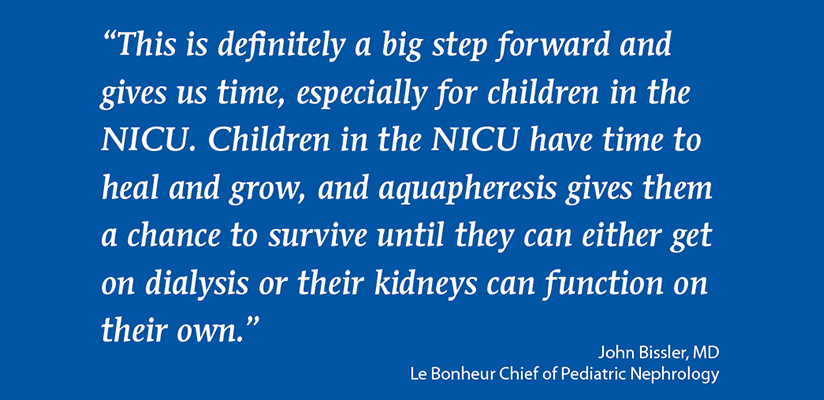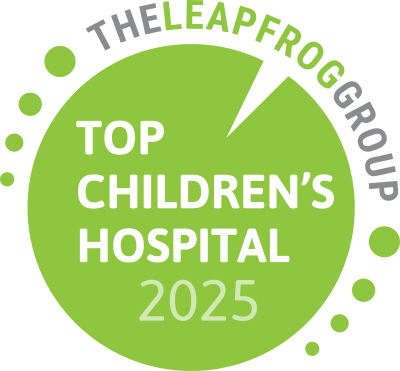Options for Overload
For children and neonates with heart failure, a fluid volume overload of just 1% of their body weight can increase mortality by 3%, says Jeffrey A. Towbin, MD, MS, executive co-director of the Heart Institute and medical director of Cardiomyopathy, Heart Failure and Heart Transplant at Le Bonheur Children’s Hospital.
The standard therapy to remove this excess fluid volume for children with heart failure or kidney injury includes diuretics, but sometimes children don’t respond to the therapy or may develop diuretic resistance. Options for removing fluid overload that work in adult-sized patients, like continuous renal replacement therapy (CRRT), require large port lines that are too big for children and neonates. These machines also have an elevated risk for infection and blood vessel damage and force children to be attached to their beds and unable to move about or rehabilitate.
Le Bonheur’s heart failure cardiologists, neonatologists and nephrologists wanted another option for these delicate patient populations that were not responding to conventional therapies like diuretics or were not able to be placed on CRRT.
“We knew that aquapheresis technology, the Aquadex SmartFlow® by Nuwellis, was slowly expanding care from adults to children and even neonates for a more controlled and portable fluid removal process, and we wanted to bring this to our patients at Le Bonheur,” said Le Bonheur Chief of Pediatric Nephrology John Bissler, MD. “Alternatives are available to save lives, and we’re doing it here.”
Aquadex uses aquapheresis, or ultrafiltration, to remove fluid from patients with volume overload and is currently used at Le Bonheur for children and neonates as small as 2 to 3 kilograms with heart failure or kidney dysfunction. Via a catheter, the device slowly draws blood from the patient, removes excess water and sodium and returns the blood back to the body.

Children who qualify for aquapheresis typically have cardio-renal syndrome, a fluid overload greater than 10% and generally have not responded to medical therapy. At Le Bonheur, aquapheresis is performed in the Pediatric Intensive Care Unit (PICU), Cardiovascular Intensive Care Unit (CVICU) and Neonatal Intensive Care Unit (NICU) as a partnership between critical care, cardiology, neonatology, nephrology, nurses and nurse practitioners.
The benefits of this technology have the potential to create better outcomes for children. Aquapheresis can use central and peripheral venous access, which means that a child’s size does not prohibit them from qualifying for the device. Plus, the aquapheresis machine can be portable, allowing children to continue to rehabilitate in the hospital, ultimately leading to shorter hospital stays and higher quality of life. Aquapheresis also has a lower risk of infection, is more cost-effective and is less traumatic to the blood vessels.
“This is definitely a big step forward and gives us time, especially for children in the NICU,” said Bissler. “Children in the NICU have time to heal and grow, and aquapheresis gives them a chance to survive until they can either get on dialysis or their kidneys can function on their own.”
For heart failure patients, aquapheresis is easier for patients but also affords a higher level of control for removing volume. It also allows their kidneys a chance to recover. For these critically-ill children, fluid removal is associated with improved outcomes.
“Our ultimate goals are removing volume overload, which lowers mortality risk, and having patients ambulating, rehabilitating and out of the hospital faster,” said Towbin. “Aquapheresis is a useful tool for children of all ages and sizes who have fluid overload.”
Help us provide the best care for kids.
Le Bonheur Children's Hospital depends on the generosity of friends like you to help us serve 250,000 children each year, regardless of their family’s ability to pay. Every gift helps us improve the lives of children.
Donate Now
















